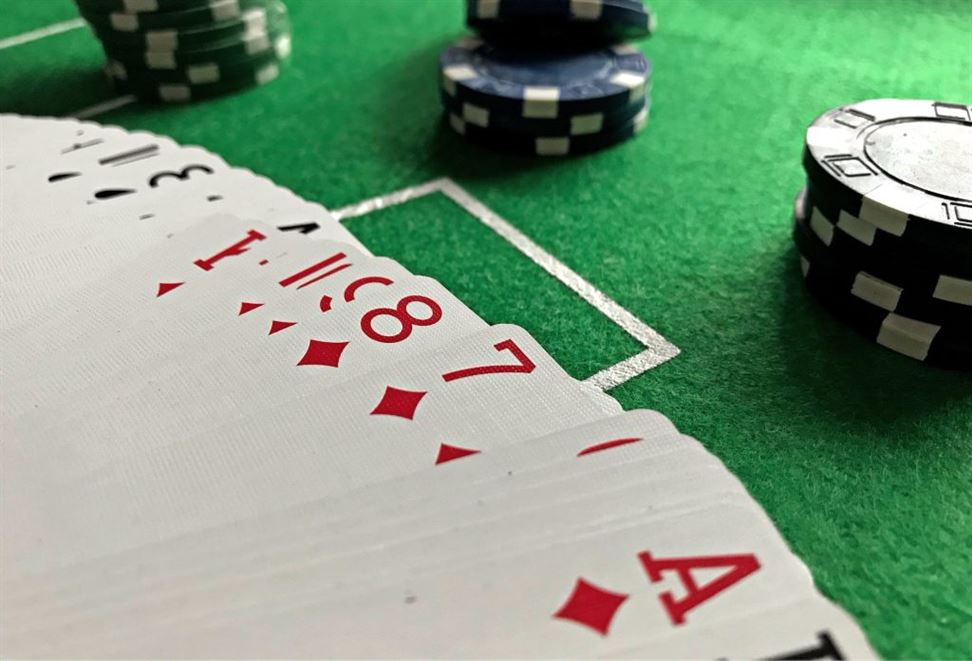Multi-table poker tournaments (MTTs) are a popular format in the world of poker, offering players the chance to compete against a large field and potentially win significant prizes. However, succeeding in MTTs requires a different set of skills and strategies compared to cash games or single-table tournaments. In this guide, we will explore various strategies that can help you dominate MTTs and increase your chances of finishing in the top positions. From early-stage play to navigating the bubble and final table dynamics, we will cover key concepts and tactics that can give you an edge in these highly competitive tournaments. Whether you’re a beginner looking to improve your MTT game or an experienced player seeking to refine your strategies, this guide will provide valuable insights to help you crush MTTs and achieve tournament success.
Effective Bankroll Management Strategies for MTTs
First and foremost, it is essential to set aside a dedicated bankroll specifically for MTTs. This means separating your poker funds from your everyday expenses and other gambling activities. By doing so, you can ensure that you have a clear understanding of how much money you have available to play MTTs and avoid dipping into funds that are meant for other purposes.
Once you have established your MTT bankroll, the next step is to determine the appropriate buy-in levels for the tournaments you wish to play. It is generally recommended to have at least 100 buy-ins for the specific stakes you are playing. For example, if you are playing $10 buy-in tournaments, you should have a bankroll of at least $1,000. This allows for a sufficient cushion to withstand the inevitable variance that comes with tournament poker.
In addition to having an adequate bankroll, it is also important to have a plan for moving up in stakes as your skills and bankroll grow. As you become more successful in MTTs and your bankroll increases, you can consider playing higher buy-in tournaments. However, it is crucial to be cautious and not move up too quickly. Moving up in stakes too soon can put unnecessary pressure on your bankroll and increase the risk of going broke.
Another key aspect of effective bankroll management is being disciplined with your spending. It can be tempting to take shots at higher buy-in tournaments or play in multiple MTTs simultaneously, especially when you are on a winning streak. However, it is important to resist the urge to splurge and stick to your bankroll management plan. By doing so, you can ensure that you are making rational decisions based on your bankroll and not letting emotions dictate your actions.
Furthermore, it is essential to track your results and regularly review your performance. By keeping a record of your MTT results, you can gain valuable insights into your strengths and weaknesses as a player. This information can help you make informed decisions about your bankroll management and identify areas where you may need to make adjustments to improve your overall performance.
Lastly, it is crucial to have a contingency plan in case things don’t go as planned. Despite your best efforts, there will be times when you experience downswings and face losing streaks. It is important to have a stop-loss limit in place to prevent significant losses and protect your bankroll. By setting a predetermined limit on how much you are willing to lose in a given session or period, you can avoid chasing losses and potentially going broke.
Advanced Positional Play Techniques in Multi-Table Tournaments
Position is a crucial aspect of poker, and it becomes even more important in MTTs. As the tournament progresses and the number of players dwindles, the value of each position increases. Being in late position allows players to act with more information, as they have observed the actions of their opponents. This knowledge can be used to make more informed decisions and gain an edge over the competition.
One advanced positional play technique is the squeeze play. This move involves re-raising an initial raiser and any callers in an attempt to win the pot pre-flop. The squeeze play is most effective when executed from late position, as it puts pressure on the initial raiser and forces the callers to make a difficult decision. By utilizing this technique strategically, players can accumulate chips without having to see a flop.
Another powerful technique in MTTs is the isolation play. This move involves raising to isolate a weak player who has entered the pot. By isolating the weak player, the goal is to play heads-up against them, increasing the chances of winning the pot. Isolation plays are particularly effective when executed from late position, as they allow players to act with more information and exploit the weaknesses of their opponents.
In addition to these positional play techniques, it is crucial to be aware of stack sizes and adjust one’s strategy accordingly. As the tournament progresses, players with shorter stacks become more desperate and are more likely to make all-in moves. Recognizing these situations and taking advantage of them can be a key factor in accumulating chips and surviving in MTTs.
One strategy to employ when facing all-in moves from short-stacked players is the reshove. This move involves re-raising all-in over the top of the initial all-in player. The reshove puts pressure on the other players in the hand, forcing them to make a difficult decision with their marginal hands. By utilizing this strategy effectively, players can accumulate chips and put themselves in a strong position to make a deep run in the tournament.
Lastly, it is important to be mindful of the bubble in MTTs. The bubble refers to the point in the tournament where only a few players need to be eliminated before the remaining players are guaranteed a cash prize. During this stage, players tend to play more cautiously, as they do not want to risk being eliminated without making it into the money. Exploiting this cautious play by being more aggressive can be a profitable strategy, as players are more likely to fold their marginal hands.
Mastering Bluffing and Semi-Bluffing in MTTs
First and foremost, it is important to understand the difference between bluffing and semi-bluffing. Bluffing involves making a bet or a raise with a weak hand, hoping to deceive your opponents into folding their stronger hands. On the other hand, semi-bluffing is when you make a bet or a raise with a hand that has the potential to improve, but is not currently the best hand. By semi-bluffing, you not only have a chance to win the pot immediately if your opponents fold, but you also have the opportunity to improve your hand and win the pot at showdown.
One key aspect of successful bluffing and semi-bluffing in MTTs is understanding your opponents’ tendencies and adjusting your strategy accordingly. Pay close attention to how your opponents play their hands and try to identify patterns in their betting behavior. Are they more likely to fold to aggression or do they tend to call down with weaker hands? By observing and analyzing your opponents, you can tailor your bluffing and semi-bluffing strategies to exploit their weaknesses.
Timing is another crucial factor when it comes to bluffing and semi-bluffing in MTTs. You need to choose the right moments to make your moves, as mistimed bluffs can be costly. Look for opportunities when the board texture is favorable for your story. For example, if the flop comes with three low cards and you have been representing a strong hand, a well-timed bluff can often force your opponents to fold. Similarly, if you have a drawing hand and the turn card completes your draw, a semi-bluff can put pressure on your opponents and potentially win you the pot.
Another important aspect of bluffing and semi-bluffing in MTTs is your table image. Your previous actions and the way you have played your hands will influence how your opponents perceive you. If you have been playing tight and only showing down strong hands, your bluffs and semi-bluffs are more likely to be successful as your opponents will give you credit for having a strong hand. On the other hand, if you have been caught bluffing multiple times, your bluffs may be met with skepticism. Therefore, it is crucial to mix up your play and maintain a balanced image at the table.
Lastly, it is important to remember that bluffing and semi-bluffing should not be overused. While they can be powerful tools, they should be used selectively and in the right situations. Bluffing too frequently can lead to predictability and make it easier for your opponents to call you down. Therefore, it is important to mix up your play and incorporate a balanced range of hands into your bluffing and semi-bluffing strategies.
Analyzing Hand Ranges and Making Correct Decisions in Multi-Table Tournaments
When playing in a multi-table tournament, it’s essential to understand the concept of hand ranges. A hand range refers to the range of hands that a player could have based on their actions and the information available. By analyzing hand ranges, you can make more informed decisions and gain an edge over your opponents.
To analyze hand ranges effectively, you need to pay close attention to the actions of your opponents. Look for patterns in their betting and consider the range of hands they could have based on those actions. For example, if a player raises pre-flop and then bets aggressively on the flop, they likely have a strong hand. On the other hand, if a player calls pre-flop and then checks on the flop, their hand range could be much wider.
Once you have a general idea of your opponent’s hand range, you can start making decisions based on that information. For example, if you have a strong hand and believe your opponent has a weaker hand, you can bet aggressively to put pressure on them and potentially force them to fold. Conversely, if you have a weak hand and believe your opponent has a strong hand, it may be wise to fold and save your chips for a better opportunity.
However, it’s important to remember that hand ranges are not set in stone. Players can deviate from their usual patterns and make unexpected moves. This is where your ability to adapt and make correct decisions becomes crucial. By constantly reassessing your opponent’s hand range and adjusting your strategy accordingly, you can stay one step ahead and increase your chances of success.
Another important aspect of analyzing hand ranges is considering the stage of the tournament. In the early stages, players tend to have wider hand ranges as they are willing to take more risks. As the tournament progresses and the blinds increase, players become more cautious, and their hand ranges narrow. Understanding these dynamics can help you make better decisions and exploit your opponents’ tendencies.
In addition to analyzing hand ranges, it’s also crucial to consider the overall tournament strategy. MTTs require a different approach than cash games or single-table tournaments. In MTTs, survival is key, and it’s important to balance aggression with caution. While it’s tempting to go all-in with a strong hand, it’s often wiser to play more conservatively and avoid unnecessary risks.
Exploiting Player Tendencies to Gain an Edge in MTTs
One of the most important skills in MTTs is the ability to read your opponents. By paying close attention to their betting patterns, body language, and overall demeanor, you can gain valuable insights into their playing style. Some players may be overly aggressive, constantly raising and re-raising, while others may be more passive, only betting when they have a strong hand. By identifying these tendencies, you can adjust your own strategy accordingly.
For example, if you notice that a player is consistently raising pre-flop, you can exploit this by re-raising with a wider range of hands. This puts pressure on them and forces them to make tough decisions. On the other hand, if you identify a player who only bets when they have a strong hand, you can use this information to your advantage by bluffing more often when they are in the pot.
Another key aspect of exploiting player tendencies is understanding the concept of range. Every player has a range of hands that they are likely to play in a given situation. By narrowing down your opponents’ ranges, you can make more informed decisions and gain an edge. For example, if a player raises from early position, their range is likely to be stronger than if they raise from late position. By taking this into account, you can adjust your own range and make better decisions post-flop.
Position also plays a crucial role in exploiting player tendencies. Being in late position gives you a significant advantage, as you have more information about your opponents’ actions before you have to act. This allows you to make more informed decisions and exploit their weaknesses. For example, if a player in early position raises, and you are in late position with a marginal hand, you can often re-raise to put pressure on them and force them to fold.
In addition to exploiting player tendencies, it is also important to be aware of your own image at the table. If you have been playing tight and conservative, your opponents are likely to view you as a strong player who only bets with premium hands. You can use this to your advantage by occasionally bluffing or making aggressive moves when you have a weaker hand. This can catch your opponents off guard and allow you to win pots without having the best hand.
In conclusion, exploiting player tendencies is a crucial skill in dominating MTTs. By paying close attention to your opponents’ betting patterns, body language, and overall demeanor, you can gain valuable insights into their playing style. This allows you to adjust your own strategy accordingly and make more informed decisions. Additionally, understanding the concept of range and utilizing position to your advantage can further enhance your ability to exploit your opponents’ weaknesses. By combining these strategies with a solid understanding of the game, you can increase your chances of crushing MTTs and coming out on top.




